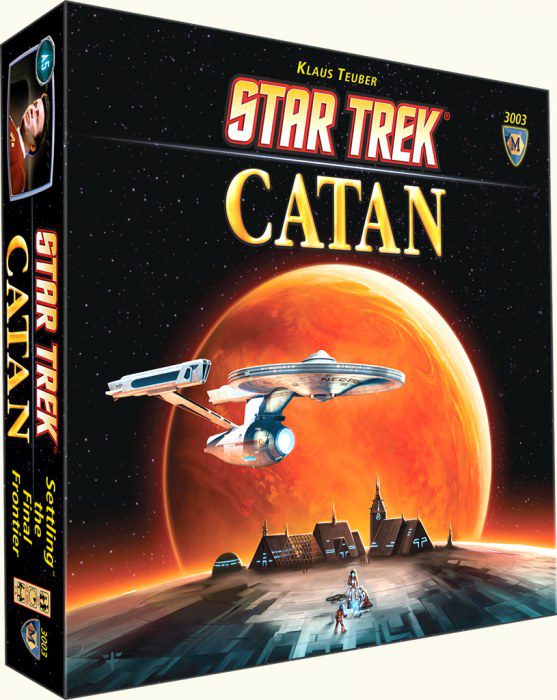Let’s put on our curatorial spectacles. For this article, I reached out to Kyle Engen, curator of board games at the Interactive Museum of Gaming and Puzzlery. Between his inside tips and my own experience as the curator of former Ottawa board game café Monopolatte, we compiled a list of 4 threats: things that, over time, can cause your favorite games to degrade. I’ve also put together some tips on how to protect your game collection — for the casual gamer, the hobby collector, and the serious preservationist.
Wear from Play
For the casual gamer:
A well-worn deck of cards can be a sign of a game that’s had a lot of love. It can also make it hard to read the text and icons that make the game tick. To protect your cards, consider picking up a pack of protective sleeves. These little plastic sheaths slide over the cards and come in all different sizes. Chances are pretty good that someone has already figured out the perfect size sleeves to buy for your game– so why not investigate?
You might also want to think about how you’re shuffling those cards. There’s nothing more satisfying than that hard shuffle sound: FLRRRRRT. Unfortunately, hobby game cards are a lot harder to replace than your classic 52, and a little care when shuffling can go a long way. Check out this video– he even shows how to shuffle those pesky sleeves you just added to your collection.
For the hobby collector:
So all your cards are sleeved and you riffle shuffle like a pro. Now what?
For games with tiles or well-used boards, colours can rub off over the years. To protect your game, you may want to apply a finish like Krylon Crystal Clear Acrylic. Available at any hardware store, a well-applied finish can provide an extra layer of protection between fingers and your game, doubling the shelf life. Be careful, though: some products can interact poorly with certain dyes. If you still have the punch boards for your game, try applying some finish there first to see if there’s any discolouration. Otherwise, find a discrete spot to test.
For the serious preservationist:
Ah, the age-old conundrum: I don’t want to play my game, because I want it to look just as beautiful the next time I play it! If you have a rare or vintage game that you want to take special care of, you may want to lay down some plexiglass over the board to reduce contact with fingers and tokens. Some folks have recommended actual glass, which tends to be more resistant to scratching over time. Still others have framed their game boards to keep them away from wear indefinitely.

I’ve heard of people who made photocopies of their rare cards for actual use… but if you’re getting to that point, it might be time to break out the velvet gloves.
Sunlight
For the casual gamer:
Just like that old poster in your childhood bedroom, games left out in the sunlight can fade over time. UV rays from sunlight can cause colours to bleach and fabric wraps to fade. You may want to store your games out of direct light in order to keep their boxes bright.

For the hobby collector:
You know total darkness is ideal for storage, but what’s the fun if you never get to see your collection? Try a UV window covering. They can be bought and applied without sacrificing the natural light in your home. It could also be used to hogtie the next person who spills a drink on your game.
For the serious preservationist:
The sun may not be a problem for you, but even lamplight can damage games over time. Why not go the museum route and switch to LED? Lower energy output means less possible light damage. Plus, you can funnel the savings from your next electricity bill back into more board games…
Moisture
For the casual gamer:
The basement: a comfy place to hide from the outside world and a dangerous source of humidity. Moisture can affect your games through more than just your friend spilling their beer over Catan. If games are kept in a damp environment, boards and boxes can warp. In hot climates, high humidity can even lead to mold. So what can be done?
Shelves are the first step. By keeping games elevated off the floor, you can limit direct contact with floors that may transfer moisture to your games. As for your beer spilling friend, you might want to ask him to keep the booze away from the game– or at least pull up an end table.
For the hobby collector:
If moving your games from the basement wasn’t enough to keep them dry, you might want to invest in some desiccant for your less-played games. A regularly replaced silica gel, and other products like it, can provide enough of a buffer to keep your games from getting musty. Of course, nothing will work quite as well as a decent dehumidifier.
For the serious preservationist:
Games breathe. Sure, it may be a little more subtle than your gasp at finding a sealed copy of Richard Breese’s Keywood, but any game will expand and contract with changes in temperature and humidity. It’s this process of expansion and contraction that can cause the slow degradation of game materials over time. The British Library’s Preservation Advisory Centre recommends that “archival materials” be kept between 13-20 degrees Celcius, and 35-60% relative humidity.
If you’re the kind of person who would use the phrase “archival materials,” maybe it’s time to invest in a temperature and humidity controlled storage room. Hey, it’s not cheap– but you could probably install one of those cool Star Trek doors. Kssssssh.

Shelf & Storage Damage
For the casual gamer:
In the world of board gaming, there is a fierce battle that has raged since the dawn of dork: do you store your games horizontally, or vertically? Team Horizontal will tell you that vertical storage spills all your board game pieces out of their inserts, or that a vertical board will warp. Team Vertical will vigorously point towards box damage from horizontally stacked games, then mumble something about wanting their library to look “classy”. Maybe you’re more of a rebel.

So let’s cut to the chase– if you’re storing horizontal, make sure you stack wisely. Not all boxes are equally sturdy. Older games are especially susceptible to corner ripping, as their adhesives may have degraded over time. If you’re storing vertical, keep the punch boards! A board game is packaged to ship, not to store: placing your empty punch boards underneath the plastic insert should push the contents flush against the lid of the box. This lets you store those annoying little tokens in their perfect insert slots without resorting to a million plastic bags.
For the hobby collector:
So your games are stacked well, but have you ever noticed the wear and tear that a shelf takes on your games? Friction– from both your shelves and other games– can rub ink and material off your boxes. You may want to invest in clear contact paper, which can be trimmed to fit the size of the game box you want to protect. Alternatively, many games will fit inside record sleeves. Both cases may remind you of your Great Aunt’s plastic wrapped couch, but can help to preserve a beloved game.
Inside the box, consider swapping out elastic bands for plastic bags or hair ties. Bands can get brittle and break, or worse, warp the cards they’re trying to keep together. Gentler storage methods help keep your cards in good shape. Once again, little plastic bags prove to be even more beloved in our hobby than by your friendly neighbourhood drug dealer.
For the serious preservationist:
For particularly valuable or rare games, you may want to re-box to protect against acid damage. Wood and cardboard are both common culprits to acid leaching, which can discolour your game and its contents. Acid-free boxes can provide a tailored storage solution, but it’s up to you to decide if the components should be isolated to protect them from the box (or each other). Now might also be a good time to swap your plastic bags and elastic bands out for archival envelopes.
***
Special thanks for this article go to the Interactive Museum of Gaming and Puzzlery, who were gracious in answering my questions. Kudos as well to resources provided through BoardGameGeek and Snakes & Lattes, who collectively strive to keep the dice rolling.











I think you should add Box Throne storage as one of the best ways to keep board games from not scuffing each other in a stack on the shelf.
We actually mention Box Throne in our Top 6 Ways to Spark Joy in Your Gaming Experience article. It’s an excellent suggestion and I heartily agree with you.
https://www.meeplemountain.com/top-six/top-6-ways-spark-joy-gaming-experience/